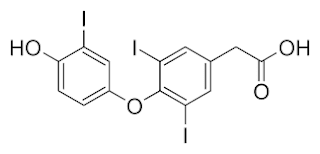Determination of truth from deception using functional MRI and cognitive engrams
Donald H. Marks
7:51 PM
0
Determination of Truth from Deception Using Functional MRI and Cognitive Engrams
D Marks, M Adineh, S Gupta
The Internet Journal of Radiology. 2005 Volume 5 Number 1.
http://ispub.com/IJRA/5/1/9241
Abstract
INTRODUCTION Investigators have attempted for centuries to determine the truthfulness and accuracy of statements (Ford 2006). Methodologies include standard interrogation, with and without use of medication or coercion, polygraph, and brain fingerprinting using brain evoked response potentials (ERP). None of these technologies yields optimal results, for various reasons, and are not entirely suitable for measuring deception.
An association between the ERP and lying on a standard test such as the Guilty Knowledge Test (GKT) suggested that deception may be associated with changes in other measures of brain activity such as regional blood flow (RBF) (Langleben 2002; Mochizuki 2001). Changes in RBF, as Blood Oxygen Level Dependent (BOLD) can be monitored using functional magnetic resonance imaging (fMRI), and have been shown to be measurements of regional brain activity (Ogawa 1990). These areas of brain activation on fMRI have been correlated with active memory encoding (Wegner 1999).
A number of researchers (Slotnick et al, Langlaben et al, Lee et al, Kozel et al) have sought to apply fMRI to discern between truth and deception. In general, test subjects were presented with artificial situations during which they were given the opportunity to tell the truth or give a false response to questions, while undergoing fMRI. The design of presentation of questions were different between research groups. These separate research groups were able to detect truthful or deceptive responses, based upon analysis of activation maps showing where in the brain there was increased neural activity. The areas of activation corresponding to truth or deception differed among groups of researchers, making a universal framework for analysis of interrogation with fMRI difficult to develop.
The purpose of this study was to validate prior work of other investigators, and to develop a paradigm to address interinvestigator variability that needs to be resolved before fMRI can be applied to interrogation in practice. Our methods employ activation area analysis, both for truth and deception, and also use activation map patterns for object recognition. These combination analytical methods should yield a more robust schema for use of fMRI as an interrogation technique. One of the central means of analysis we employ is the concept of the cognitive engram, which we define as the multi-dimensional representation of activation areas in the brain, which we contend represent the actual specific thought process. We have grouped truthful and deceptive responses, and also the recognition of specific faces and objects, into cognitive Engrams. Certainly when an individual thinks of a truthful or a deceptive response, or recognizes a face or an object, that concept transforms into the more generalized concept of truthfulness or deception, or recognition of a specific person. This overall recognition is not simply fragmented into hundreds of isolated activation points, but should be treated as a whole, as a cognitive engram, consisting of a number of widely distributed activation areas representing a single concept.
METHODOLOGY We operated under an IRB-approved protocol, and all volunteers signed an informed consent form. Healthy adult volunteers without exclusions to MRI scanning were explained the study purpose and design, risks and benefits, given a chance to ask questions and then agreed to participate. Continual neuroimaging (fMRI) was performed during viewing of the test stimuli in order to capture structural and functional data. The data was analyzed for the presence of neuroimaging activation that has been shown to correspond to cognition and visual recognition.
D Marks, M Adineh, S Gupta
The Internet Journal of Radiology. 2005 Volume 5 Number 1.
http://ispub.com/IJRA/5/1/9241
Abstract
INTRODUCTION Investigators have attempted for centuries to determine the truthfulness and accuracy of statements (Ford 2006). Methodologies include standard interrogation, with and without use of medication or coercion, polygraph, and brain fingerprinting using brain evoked response potentials (ERP). None of these technologies yields optimal results, for various reasons, and are not entirely suitable for measuring deception.
An association between the ERP and lying on a standard test such as the Guilty Knowledge Test (GKT) suggested that deception may be associated with changes in other measures of brain activity such as regional blood flow (RBF) (Langleben 2002; Mochizuki 2001). Changes in RBF, as Blood Oxygen Level Dependent (BOLD) can be monitored using functional magnetic resonance imaging (fMRI), and have been shown to be measurements of regional brain activity (Ogawa 1990). These areas of brain activation on fMRI have been correlated with active memory encoding (Wegner 1999).
A number of researchers (Slotnick et al, Langlaben et al, Lee et al, Kozel et al) have sought to apply fMRI to discern between truth and deception. In general, test subjects were presented with artificial situations during which they were given the opportunity to tell the truth or give a false response to questions, while undergoing fMRI. The design of presentation of questions were different between research groups. These separate research groups were able to detect truthful or deceptive responses, based upon analysis of activation maps showing where in the brain there was increased neural activity. The areas of activation corresponding to truth or deception differed among groups of researchers, making a universal framework for analysis of interrogation with fMRI difficult to develop.
The purpose of this study was to validate prior work of other investigators, and to develop a paradigm to address interinvestigator variability that needs to be resolved before fMRI can be applied to interrogation in practice. Our methods employ activation area analysis, both for truth and deception, and also use activation map patterns for object recognition. These combination analytical methods should yield a more robust schema for use of fMRI as an interrogation technique. One of the central means of analysis we employ is the concept of the cognitive engram, which we define as the multi-dimensional representation of activation areas in the brain, which we contend represent the actual specific thought process. We have grouped truthful and deceptive responses, and also the recognition of specific faces and objects, into cognitive Engrams. Certainly when an individual thinks of a truthful or a deceptive response, or recognizes a face or an object, that concept transforms into the more generalized concept of truthfulness or deception, or recognition of a specific person. This overall recognition is not simply fragmented into hundreds of isolated activation points, but should be treated as a whole, as a cognitive engram, consisting of a number of widely distributed activation areas representing a single concept.
METHODOLOGY We operated under an IRB-approved protocol, and all volunteers signed an informed consent form. Healthy adult volunteers without exclusions to MRI scanning were explained the study purpose and design, risks and benefits, given a chance to ask questions and then agreed to participate. Continual neuroimaging (fMRI) was performed during viewing of the test stimuli in order to capture structural and functional data. The data was analyzed for the presence of neuroimaging activation that has been shown to correspond to cognition and visual recognition.

.png)
